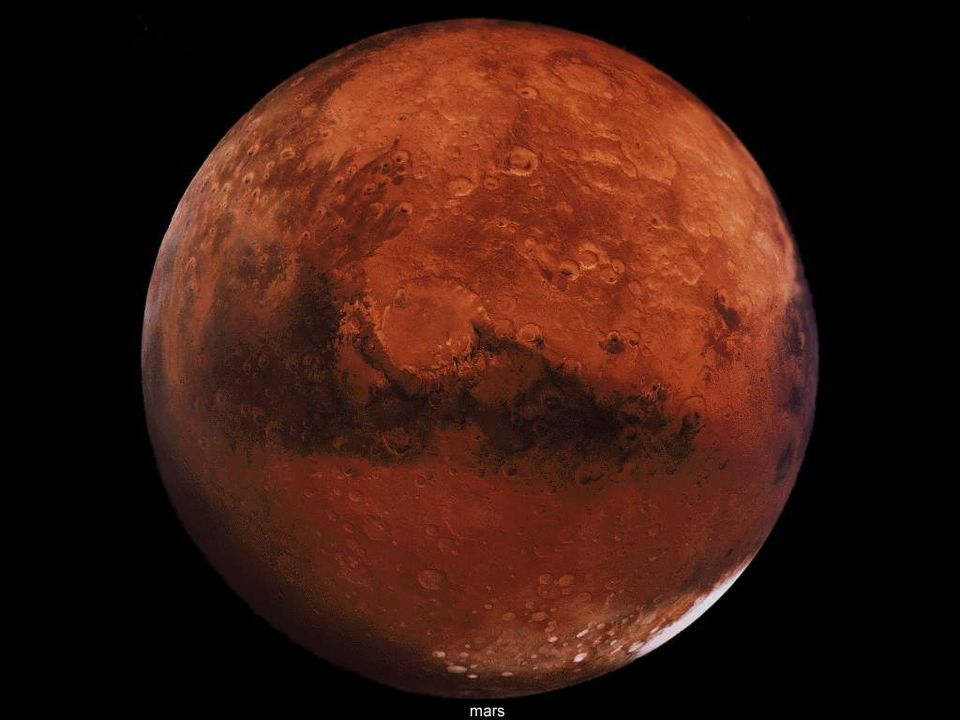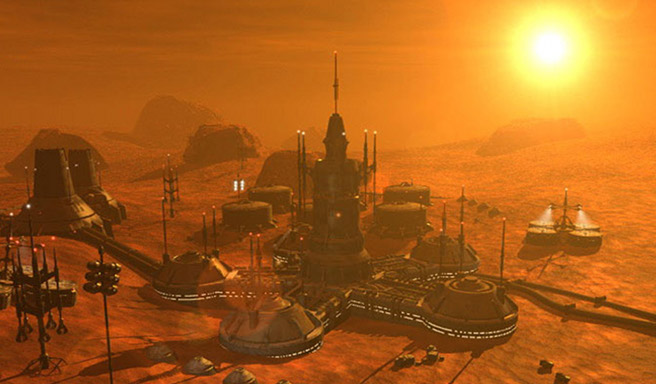Colonizing Mars has been in back of our minds for years—decades, actually; the obsession pretty much began with the Space Race in the seventies. NASA is already occupied with planning the launch of a fifth Mars Rover in just six short years, and they hope to send a manned mission up to the Red Planet by 2030 at the very latest, but more and more researchers seem to be interested in answering the Big Question: Can Mars really support a long-term settlement of humans? And most importantly, what will that long-term settlement eat?

I’m more interested in the whole “breathing in space for years and years and years” quandary myself, but that might be why I’m not a NASA scientist. Meh.
Growing plants would provide oxygen to Mars’ atmosphere and dissolve some of the carbon dioxide surrounding the planet, both things that would contribute to making it a more hospitable environment. It’s definitely true that growing our own food when we colonize Mars, whenever that may be, would be infinitely preferable to having to launch a rocket every couple of months to bring packets of freeze-dried rations to a probably less than enthused space populace. According to Mashable, this could lead to something called “menu fatigue.”
“It's a psychological phenomenon also found in the military that you develop when you eat the same foods over and over again,” said HI-SEAS (Hawaii Space Exploration Analog and Simulation Site) crew commander Angelo Vermeulen of the syndrome in a statement. “After a while you start eating less and your physical condition goes down. The last thing you want is a skinny, underfed astronaut.”
Or a skinny, underfed space colony trying to eek out life in a previously barren world. Vermeulen, whose HI-SEAS six-person team spent four months at the foot of the Mauna Loa volcano studying ways to prepare foods on Mars, also stated that a long-term settlement has “probably no other option” than growing their own food.

This could be us in an undetermined number of years. Hopefully by then we’ve also figured out how to supply enough oxygen to an oxygen-less planet so our budding colony doesn’t asphyxiate
The composition of volcanic soil is believed to be similar to the soil of Mars, which is why Vermeulen and his team set out to research food growth and remote-operated robotic farming at the feet of Hawaii’s Mauna Loa. They picked a location that could not be easily accessed, and devised a spiral hydroponics garden system complete with a central robotic arm to farm the otherwise untouchable piece of land. They also tried growing plant sprouts with a system that included a 3-D-printed sprouting system as well as plain old plastic containers.
These two experiments eventually yielded seeds of lettuce, chard, and arugula, as well as alfalfa, broccoli, clover and radish sprouts, so at least our future space colony will be healthy. Really, really healthy. Healthy almost to the level of pity, if you are the type of person who likes leisurely pleasures like chips or cheese or dear God, any form of dessert.

Just the THOUGHT of living on nothing but alfalfa sprouts….
But let’s get back to the scientific applications of food on Mars.
As well as Vermeulen’s experiment, NASA also provided 14 different plant seeds to Dutch ecologist Dr. Wieger Wimelink, of the Netherlands Alterra Institute, who planted each seed in Martian soil. Wimelink’s experiment showed that all 14 plants germinated in Martian soil—some even outgrowing their counterparts in Earth’s soil.
Successful food growth on Mars would contribute highly to a thriving colony for any number of reasons, including the plant waste it would eventually produce. This waste, when composted and mixed with Martian soil, could allow essential nutrients to seep in, valuably enriching the soil. We’ve seen this done in volcanic soil on Earth so it’s not a stretch to think it could work on Mars, especially after the work of the HI-SEAS team and Wamelink’s experiments.
While I do not expect to see Mars colonized at all soon, this is certainly an exciting development in the process—if we are ever to colonize the Final Frontier, food is important. Let’s just hope that whenever we get up there NASA has figured out a way to get those poor, poor people something other than freeze-dried rations and alfalfa sprouts.
SourceMashable
Advertisement
Learn more about Electronic Products Magazine





